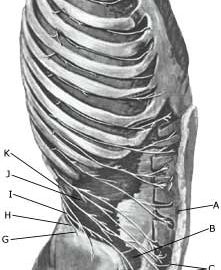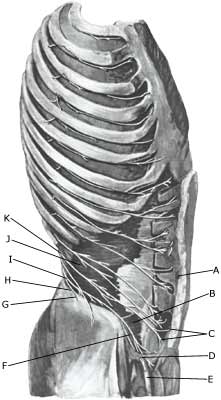|
||
|
||
| Cause: If one of the nerve branches is entrapped, pain and sensation disturbances will occur in the area that the nerve supplies sensory nerves to.
Symptoms: Pain in the groin region. Discomfort and sensory disturbances can often be induced if the area where the nerve is entrapped is scratched/pushed. Examination: In the medical examination the doctor attempt to produce the discomfort symptoms by scratching or pushing the area in which the nerve is entrapped. By administering a couple of millilitres of local anaesthetic in this area the symptoms should disappear if the diagnosis is correct (otherwise the diagnosis is wrong). There is no examination (X-ray, ultrasound, MRI, scintigraphy) that can detect the nerve entrapment. The real frequency of the diagnosis is debated amongst professionals. Treatment: Since the condition is harmless and without risk even if you continue sports activity, continuing sport is recommended in the hope that the discomfort will pass on its own. Pausing and alternative training of the abdominal muscles can be attempted. If the discomfort is long-lasting with no sign of abatement, even during summer or winter breaks, you can consider surgically severing the nerve, provided that pain abates when local anaesthesia is administered (article-1) (article-2). Rehabilitation: If the discomfort stems from the nerve, you should be able to resume sports activity immediately following the operation. Complications: Since it can be difficult to make a correct diagnosis in athletes with long-term groin pain (article), it should be supplemented with, amongst other things, ultrasound scanning and consideration of x-ray scintigraphy and possibly an MRI scan. It should be considered whether the diagnosis is correct, and amongst other things consider the following:
|


